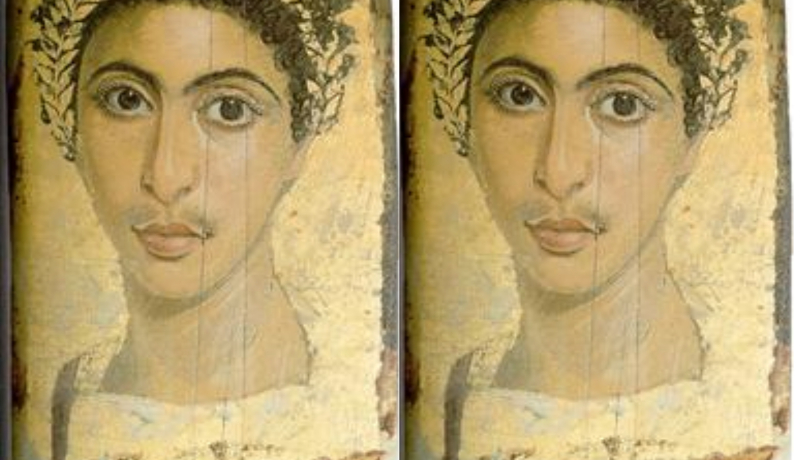Mummy portraits, also known as Fayum mummy portraits (also known as Faiyum mummy portraits), are a sort of naturalistic painted portrait on wooden boards attached to Upper class mummies from Roman Egypt.
They are part of the panel painting tradition, which is one of the most highly appreciated genres of art in the Classical era. The Fayum portraits are the only significant body of work from that period to have survived.
About the Mummy Portraits
Mummy portraits have been discovered throughout Egypt, although they are especially prevalent in the Faiyum Basin, particularly in Hawara (thus the common name) and the Hadrianic Roman city Antinoopolis. “Faiyum Portraits” is more of a style description than a geographical one. While painted cartonnage mummy cases date back to Pharaonic times, Faiyum mummy portraits were a Roman occupation of Egypt innovation.
The portraits are from the Imperial Roman era, about the late first century BC or early first century AD. It is unknown when their production ceased, but current study estimates the mid-third century. They are among the largest groupings of the very few survivors of the ancient world’s panel painting tradition, which was continued into Byzantine and Western traditions in the post-classical world, including Egypt’s native Coptic iconography legacy.
The pictures veiled the faces of mummified bodies before burial. Existing evidence suggests that they were mounted into the textile bands used to wrap the bodies. Almost all of them have now been separated from the mummies. They usually portray a single person’s head, or the head and upper chest, viewed from the front. In terms of aesthetic tradition, the images definitely come more from Greco-Roman than Egyptian traditions.
Technique distinguishes two categories of portraits: encaustic (wax) paintings and tempera paintings. The former are often of greater grade.
Currently, over 900 mummy portraits are known. The majority were discovered in Faiyum’s necropoleis. Because of the hot, dry Egyptian atmosphere, the paintings are typically exceptionally well maintained, with dazzling colors that appear unfaded by time.
During a voyage to Saqqara-Memphis in 1615, the Italian explorer Pietro della Valle was the first European to find and describe mummy portraits. He brought three mummies with portraits to Europe, which are presently on display at the Albertinum (Staatliche Kunstsammlungen Dresden).
Although interest in Ancient Egypt grew rapidly after that time, other discoveries of mummy pictures were not made public until the early nineteenth century. The origin of these first fresh discoveries is unknown; they could be from Saqqara or Thebes.
In 1820, the Baron of Minotuli purchased three mummy pictures for a German collector, but they were lost in the North Sea with a shipload of Egyptian antiques. Léon de Laborde brought two portraits from Memphis to Europe in 1827, one of which is now housed at the Louvre and the other in the British Museum.
A further portrait was brought back to Florence by Ippolito Rosellini, a member of Jean-François Champollion’s 1828/29 trip to Egypt. It is considered to have come from the same source as de Laborde’s specimens. Several more portraits were sent to Paris and London by Henry Salt, the British Consul General in Egypt, during the 1820s. Some of these were long thought to be pictures of the Theban Archon Pollios Soter’s family, a historical figure known from written sources, but this has been proven false.











